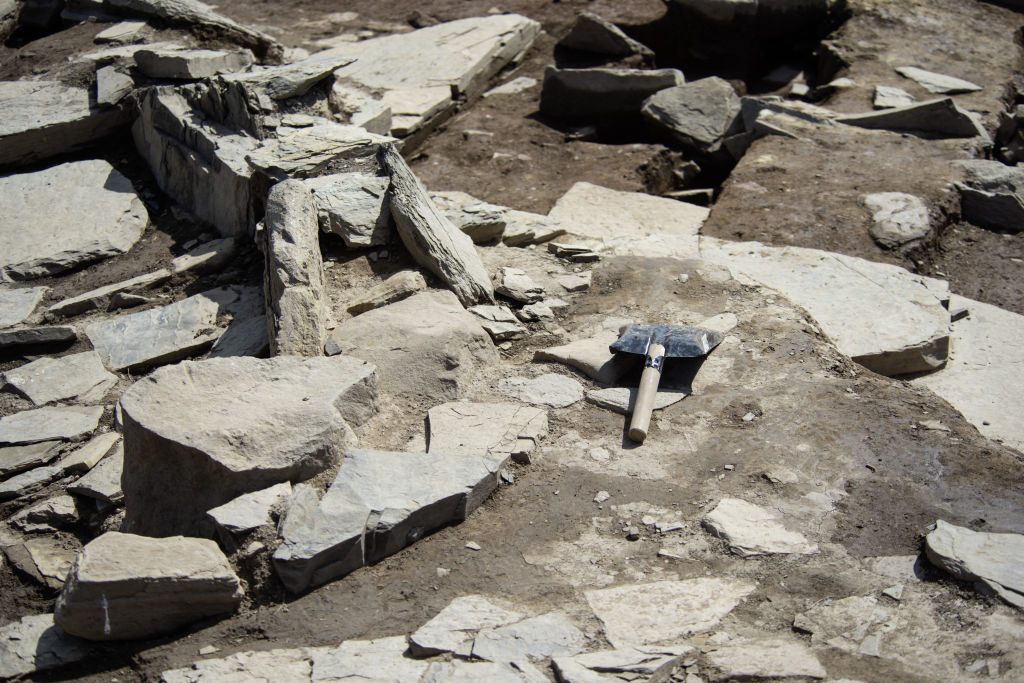The Danish town of Jelling is known for a few things, including being the home of the evocatively-named 10th century ruler Gorm the Old. For historians and archaeologists, it’s even more significant. Jelling is the location of a UNESCO World Heritage Site featuring a historic church, burial mounds and rune stones. They have stood there for over a thousand years, and help illustrate the spread of Christianity across Denmark. And now, something new has been added to the list of historical finds in Jelling — and it’s from an unexpected source.
As Tara Wu at Smithsonian Magazine reports, a man named Ole Ginnerup Schytz bought a new metal detector and decided to take it out for a spin last December. The amateur treasure hunter did so in a field near Jelling, and soon found the device alerting him to the presence of metal underground. What he found was, historically speaking, massive: a trove of gold objects dating back 1,500 years.
All in all, he found 22 distinct gold objects, weighing a total of two pounds. And once experts got a sense of what Schytz had found, they quickly pinpointed its significance, given the dearth of information about the region before the Vikings took control of it. Among the objects are those bearing the images of Norse gods and at least some repurposed Roman coins.
For parties intrigued by Schytz’s discovery, the Vejle Art Museum has a page dedicated to the find, which will be featured in an exhibition slated to open next year.
Thanks for reading InsideHook. Sign up for our daily newsletter and be in the know.

















